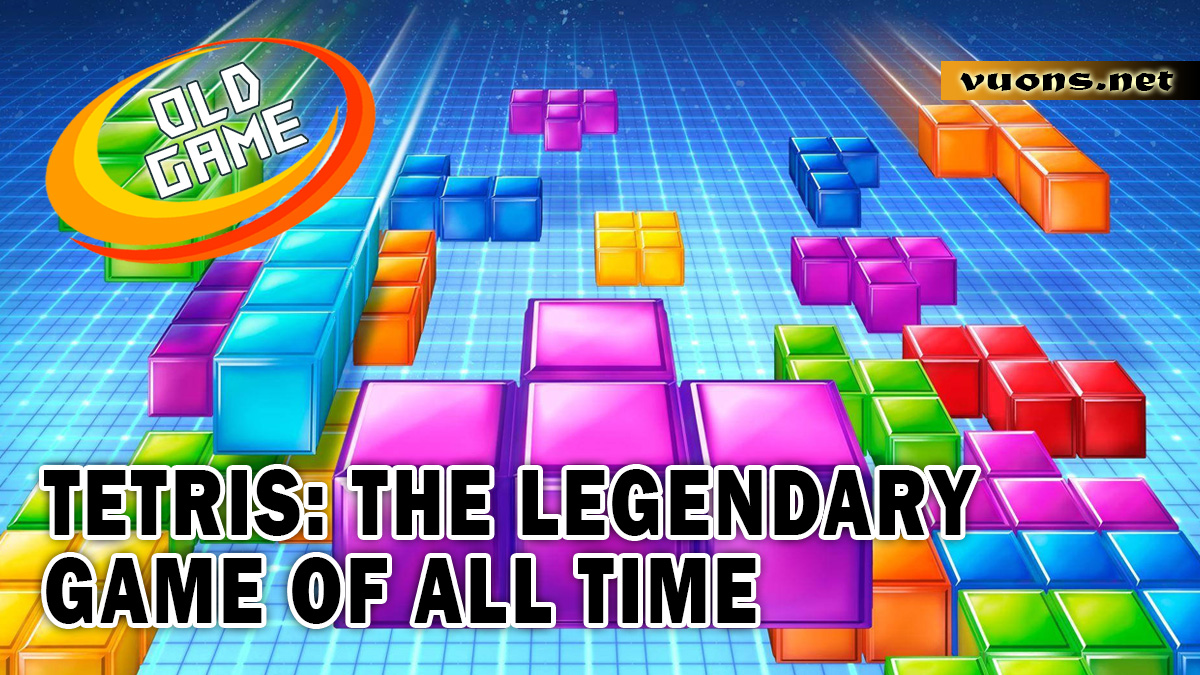TETRIS: THE LEGENDARY GAME OF ALL TIME
History and Origins of Tetris
Tetris is one of the most iconic and legendary video games of all time. Created by a Russian software engineer named Alexey Pajitnov on June 6, 1984, the game was born from Pajitnov’s experiments with puzzles and computer algorithms. In creating Tetris, Pajitnov was inspired by a traditional board game called Pentominoes, which involves arranging blocks of various shapes into regular patterns.
The history and origins of Tetris begin in Moscow, where Pajitnov worked at the Dorodnitsyn Computer Center of the USSR Academy of Sciences. Together with two colleagues, Dmitry Pavlovsky and Vadim Gerasimov, Pajitnov developed an early version of Tetris on the Elektronika 60 computer, a Soviet computer. After completing the first version, Tetris quickly spread to computers in Moscow, attracting the attention of many people with its simple but challenging gameplay.
Tetris’ popularity exploded when the game reached the West. A Dutch game publisher named Henk Rogers saw great potential in Tetris and obtained distribution rights for the Nintendo Game Boy platform. When Tetris was released for the Game Boy in 1989, the game became a global phenomenon, making it one of the most famous games of all time.
Tetris is not only entertaining, it has also had a significant impact on the gaming industry and popular culture. This game is known for its ability to improve cognitive skills, such as problem solving and strategic thinking. Tetris has also been adapted to a variety of platforms, from computers and consoles to smartphones, making it a game that continues to be relevant in the digital age.
The history and origins of Tetris show how a simple game can grow into a global cultural icon, inspiring generations of players and game developers around the world.
The Impact of Tetris on the Global Gaming Industry
One of Tetris’ biggest influences was the introduction of the simple yet addictive concept of the “puzzle game.” With gameplay that is easy to learn but difficult to master, Tetris attracts the attention of players of all ages and backgrounds. This simplicity paved the way for many game developers to create similar puzzle games that emphasized skill and strategy, not just graphics or complex storylines.
Tetris also played an important role in the popularization of portable gaming devices. When Tetris was released for the Nintendo Game Boy in 1989, the game became one of the main reasons for the platform’s huge success. The Game Boy, with Tetris as its flagship game, showed that portable gaming devices could have as much appeal as home consoles, paving the way for the development of modern portable devices such as smartphones and tablets which are now the primary platforms for gaming.
Tetris’ influence on the global gaming industry is also visible in various game design innovations. Tetris design principles, such as time-based play and simplicity of control, have been applied in various other game genres. Additionally, Tetris’ success in reaching international markets demonstrates the importance of accessibility and universality in game design, providing valuable lessons for game developers around the world.
Overall, Tetris’ impact on the global gaming industry reflects the power of a simple idea executed to perfection. Tetris has not only entertained millions of people for decades, but also inspired and shaped the future of the gaming industry, making it the legendary game of all time.
Tetris in Popular Culture: Film, Music, and More
Tetris in popular culture is a phenomenon that transcends the boundaries of the game itself. Since its creation by Alexey Pajitnov in 1984, Tetris has become an icon known throughout the world. In addition to being a very popular game, Tetris has also inspired various aspects of popular culture, including films, music, and other media.
In the world of film, Tetris also left its mark. In 2020, a documentary entitled “Tetris: From Russia with Love” was released, depicting the history and legal battles behind the game’s distribution rights. This film provides in-depth insight into how Tetris succeeded in becoming a global phenomenon and the challenges faced by its creators. Apart from that, there are also plans to make a fictional film based on the story behind the development and spread of Tetris.
Tetris also appears in various other forms of media, such as television shows, advertising, and art. Many references and parodies of Tetris appear in popular culture, showing how deeply the game has seeped into our collective consciousness. The geometric design and addictive gameplay have inspired artists to create works of art based on elements from Tetris.
Tetris in popular culture: movies, music and more show that this game is more than just entertainment. Tetris has become an integral part of global culture, inspiring and influencing various aspects of our lives. From music and film to art and media, Tetris continues to captivate and connect people around the world.
Innovation and Adaptation of Tetris in the Digital Era
Innovation and adaptation of Tetris in the digital era have ensured that this classic game remains relevant and popular amidst technological advances. Since it was first released in 1984, Tetris has undergone various changes and adjustments that have allowed the game to continue to attract players from generation to generation.
One of the main innovations in Tetris is its adaptation to multiple platforms. Initially, Tetris was only available on computers, but over time, the game expanded to game consoles, portable devices, mobile phones, and even web-based applications. Modern versions of Tetris, such as Tetris 99 for Nintendo Switch and Tetris Effect for PlayStation 4 and PC, introduce new elements such as online multiplayer modes and stunning graphics, combining classic gameplay with richer visual and social experiences.
Apart from platforms, Tetris also adapts to new trends and technologies. For example, Tetris Blitz and Tetris Beat are variants of classic games designed for fast, competitive play, perfect for the short gaming sessions that smartphone users are interested in. Tetris has also taken advantage of VR technology with the release of Tetris Effect, which offers an immersive and immersive experience through stunning visuals and music that syncs with the gameplay.
Innovation in game design is also key to adapting Tetris to the digital era. Developers continue to explore new ways to improve gameplay, such as adding power-ups, challenge modes, and story elements. This ensures that Tetris doesn’t just rely on nostalgia, but also offers something fresh and exciting for new players.
The innovation and adaptation of Tetris in the digital era shows how the game has managed to maintain its appeal for nearly four decades. By continuing to innovate and adapt to technological developments, Tetris remains a legendary game loved by millions of people around the world.
Tetris in Education: Using Games for Learning
Tetris in education is a great example of how games can be used as an effective learning tool. Known for its simple yet challenging gameplay, Tetris offers a variety of cognitive benefits that can be applied in educational contexts.
One of the main benefits of Tetris is improved spatial abilities. In this game, players have to rotate and place different shaped blocks so that they fit and form a full row. This activity trains the brain to recognize patterns and visualize how objects can be arranged efficiently, skills that are especially useful in the fields of mathematics, science, and engineering.
Tetris also helps improve problem-solving abilities and quick decision making. Each falling block requires a quick and precise response from the player, teaching them to think critically and make decisions in a short time. This is an important skill not only in academics, but also in everyday life.
Additionally, Tetris can be used as a tool to teach basic concepts in various disciplines. For example, teachers can use Tetris to teach geometric principles, such as symmetry and rotation. This game can also be used to introduce physics concepts, such as gravity and momentum, in a fun and interactive way.
The use of Tetris in education can also increase student motivation and engagement. As a fun and challenging game, Tetris can make the learning process more interesting and reduce boredom. It also allows students to learn through hands-on experience, which is often more effective than traditional learning methods.
Overall, Tetris in education shows the game’s great potential as a learning tool. By utilizing games that many people already know and love, educators can create a dynamic and fun learning environment that teaches not only academic skills but also important life skills.




